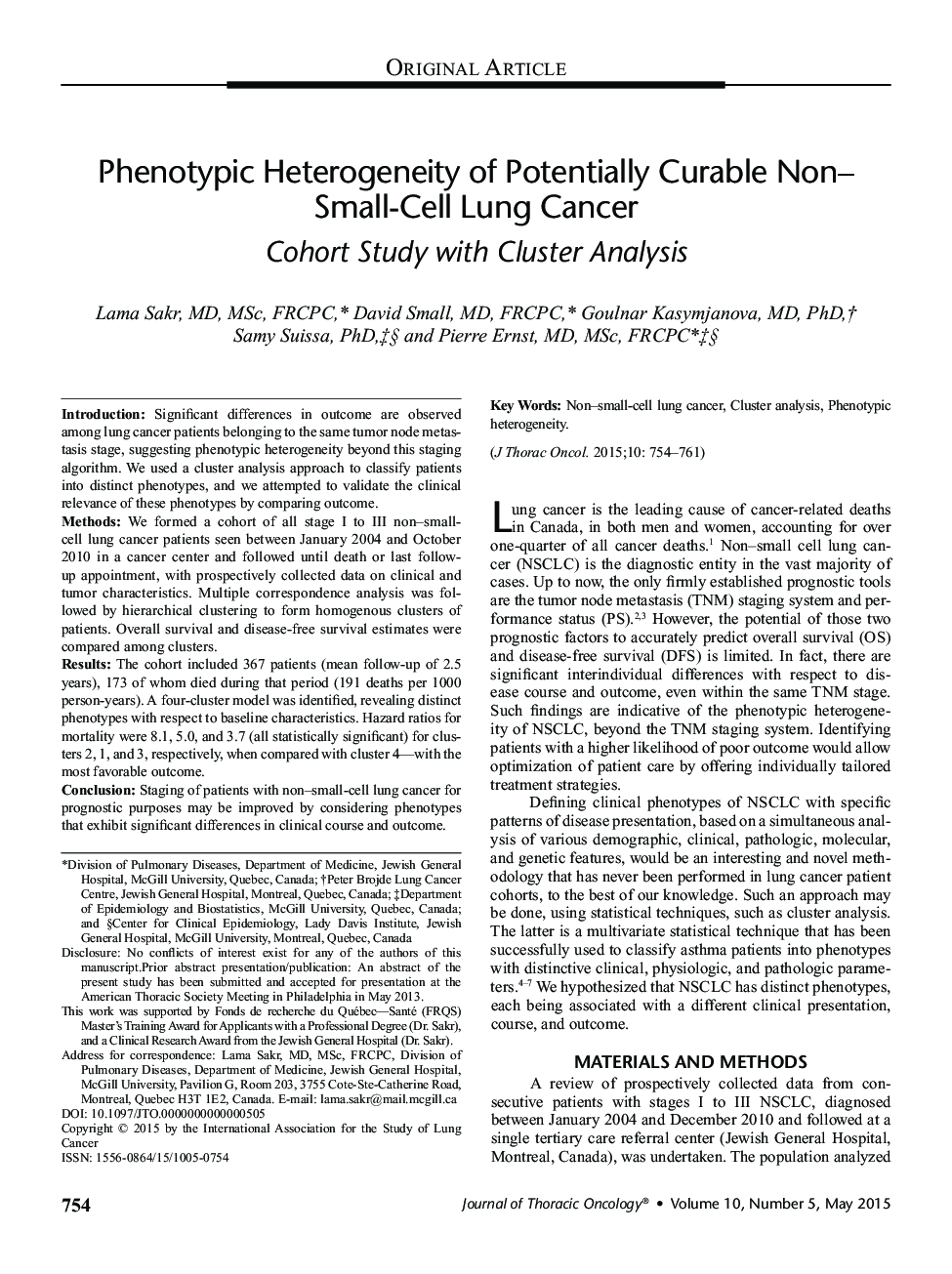| Article ID | Journal | Published Year | Pages | File Type |
|---|---|---|---|---|
| 3989616 | Journal of Thoracic Oncology | 2015 | 8 Pages |
IntroductionSignificant differences in outcome are observed among lung cancer patients belonging to the same tumor node metastasis stage, suggesting phenotypic heterogeneity beyond this staging algorithm. We used a cluster analysis approach to classify patients into distinct phenotypes, and we attempted to validate the clinical relevance of these phenotypes by comparing outcome.MethodsWe formed a cohort of all stage I to III non–small-cell lung cancer patients seen between January 2004 and October 2010 in a cancer center and followed until death or last follow-up appointment, with prospectively collected data on clinical and tumor characteristics. Multiple correspondence analysis was followed by hierarchical clustering to form homogenous clusters of patients. Overall survival and disease-free survival estimates were compared among clusters.ResultsThe cohort included 367 patients (mean follow-up of 2.5 years), 173 of whom died during that period (191 deaths per 1000 person-years). A four-cluster model was identified, revealing distinct phenotypes with respect to baseline characteristics. Hazard ratios for mortality were 8.1, 5.0, and 3.7 (all statistically significant) for clusters 2, 1, and 3, respectively, when compared with cluster 4—with the most favorable outcome.ConclusionStaging of patients with non–small-cell lung cancer for prognostic purposes may be improved by considering phenotypes that exhibit significant differences in clinical course and outcome.
